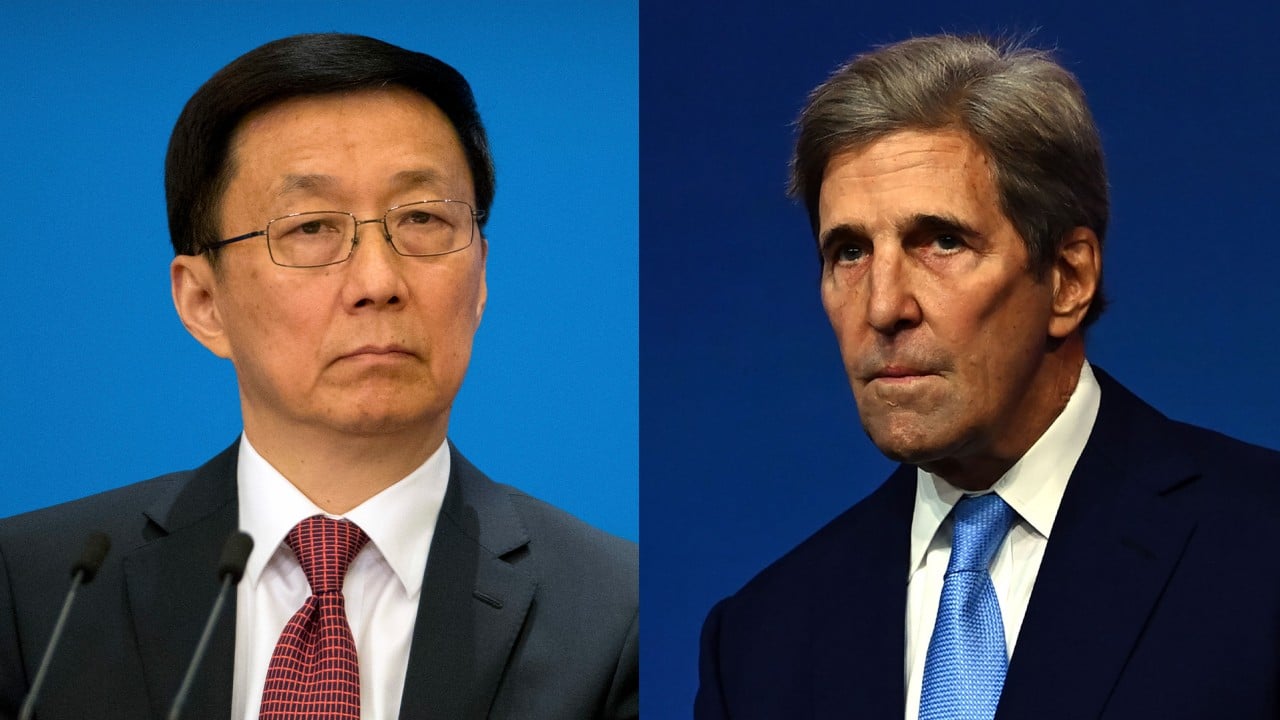
US-China relations: Biden’s trade strike force sees US turn to aggressive ‘industrial policy’ to counter Beijing
- US supply chain review shows willingness to experiment with expansive industrial policy to maintain global hegemony, experts say
- Trade ‘strike force’ provides new tools for the Biden administration to target centrally-managed economies like China
US efforts to combat unfair trade practices with a new strike force and provide government support for American businesses highlight the Biden administration’s “more aggressive” stance towards China, as well as its willingness to implement “industrial policy” to maintain international dominance, analysts say.
The measures were contained in a 255-page review released on the same day the Senate passed a sweeping US$250 billion bill to boost US competitiveness in the face of mounting geopolitical tension with China.
Touching on nearly every aspect of the complex and increasingly tense relationship between Washington and Beijing, the bill includes hundreds of billions of dollars for American semiconductor manufacturing and research and development.
“Compared to the Trump administration, the Biden administration’s policy toward China since taking office has been more aggressive, especially in the hi-tech sector,” said Shi Yinhong, an adviser to the State Council, the country’s cabinet.
“The specific measures have become more and more detailed and comprehensive.”
The supply chain review does not explicitly target China, but some recommendations are clearly directed towards competition with the world’s second largest economy, according to analysts.
Many of the recommendations contained in the review certainly look a lot like industrial policy
Stephen Olson, a senior research fellow at the Hinrich Foundation, said the review envisions “a high degree of government involvement” in domestic manufacturing and massive subsidisation to private companies.
“Although the US has traditionally had an aversion to industrial policy, many of the recommendations contained in the review certainly look a lot like industrial policy,” said Olson, adding many of the proposals will take years if not decades to bear any fruit.
Olson said the trade strike force might ultimately be the most impactful initiative contained in the review, as US trade law had failed to keep up with the types of challenges American businesses now face, especially from China.

03:53
China ‘closing in fast’, says US President Joe Biden in first address to Congress
“I’d expect this process to result in new or refined trade tools that allow the US to more effectively and precisely target trade distortions that emanate from non-market, centrally-managed economies like China,” said the former trade negotiator with the Office of the US Trade Representative (USTR).
Wang Huiyao, president of the Centre for China and Globalisation, a Beijing think tank, said the US measures to address supply chain vulnerabilities were not a move in the right direction for globalisation.
“This is really driven by this cold war mentality to block companies doing business with each other … this is really turning back the clock of history development,” said Wang.
“After so many years of globalisation that were championed by the US, we have really made a global value chain that is efficient and effective.”
Tuesday’s report underlined US dependence on imports of neodymium magnets, a key rare earth element used in computer hard disks and electric motors. The US Department of Commerce is evaluating whether to initiate a Section 232 investigation into the national security impact of neodymium magnet imports.
Olson said the potential use of section 232 for the rare earth magnets was clearly targeted towards China.
“Section 232 illustrates why US trade remedy laws need an update. It’s a blunt instrument conceived during the Cold War that the Trump administration contorted to take trade actions it felt were needed, but couldn’t otherwise pursue,” he said.
China could struggle to adequately respond to a US strike force if Washington garnered cooperation from other nations, according to a State Council adviser, who asked not to be named because they were unauthorised to talk to the media.
“If developed countries come together to take coordinated action on supply chains … there are few effective measures for China to take,” the expert said.

01:57
US, China put aside differences for pledge to work together on climate change
But Nicole Bivens Collinson, president of international trade and government relations with law firm Sandler, Travis & Rosenberg, said details were lacking about how the strike force will work and who will be involved.
The Biden administration’s intent to work with allies also remains to be seen, said the former assistant chief negotiator at the USTR.
“The door opened by the Trump Administration will remain open during the Biden Administration, including the use of Section 301, 201, 232, anti-dumping and countervailing duties, sanctions, and so on,” she said.
On Wednesday, the National People’s Congress (NPC) said the Senate bill sought to maintain US hegemony by exaggerating the so-called China threat.
It was also a means to deprive the country of its right to development through decoupling. “The bill shows that the paranoid delusions of exclusivity have distorted the original intent of innovation and competition,” the NPC said in a statement.

